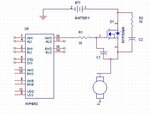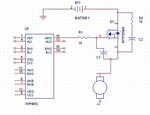geoleomeo
Newbie level 6
I am making a PCB for control of three 24 vols motors, 12 ampere each. I found in the original board that the designer separates the copper pour of the ground plane under the power components and the micro-controller components but they are still connected by a thin trace at some point while the designer could simply make it one plane. What is the value of this discontinuation while connection at one point??
Thank you
George
Thank you
George

